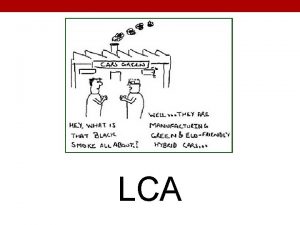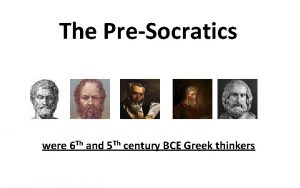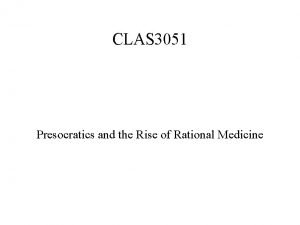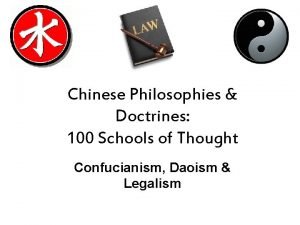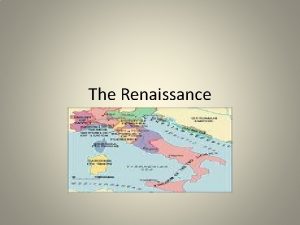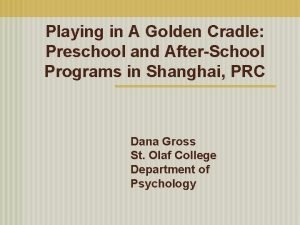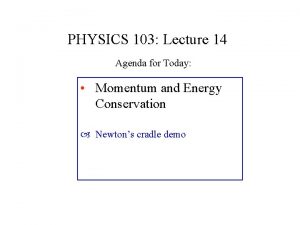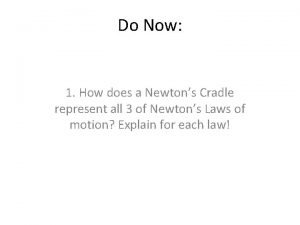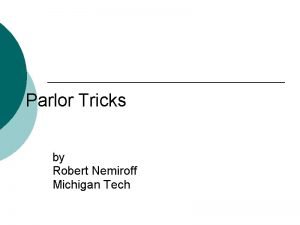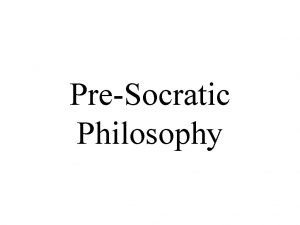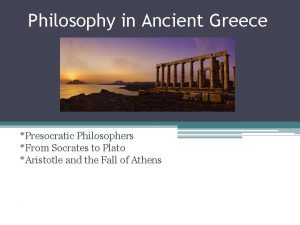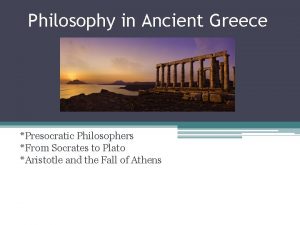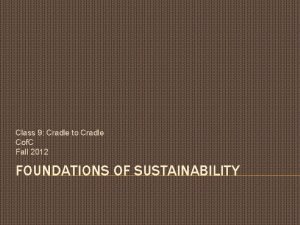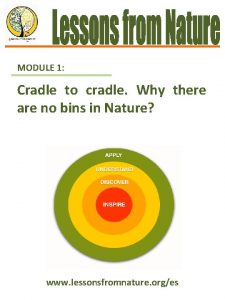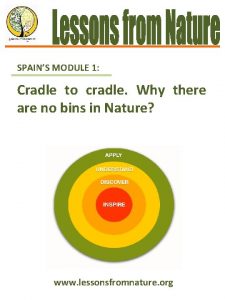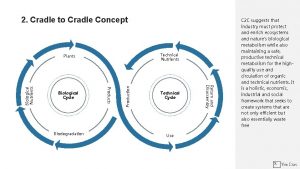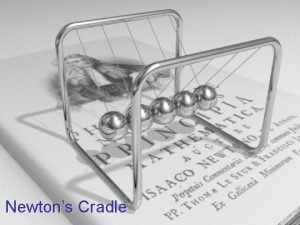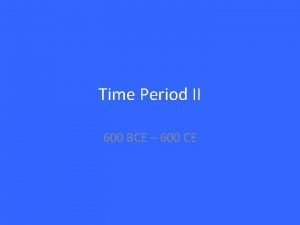The Cradle of Western Thought PreSocratic Philosophy 600





















- Slides: 21

The Cradle of Western Thought Pre-Socratic Philosophy 600 – 450 B. C.

In the beginning… “The history of philosophy began on May 28, 585 B. C. At 6: 13 p. m. Greek Standard Time. ” (Gordon Clark)

The Pre-Socratics Asia Minor (Ionia) • • Thales, Anaximander, & Anaximenes (Miletus) Heraclitus (Ephesus) Anaxagoras The Atomists Southern Italy • The Pythagoreans • Parmenides, Zeno, and Empedocles

The Milesians Thales Anaximander Anaximenes

The Ionians/Milesians Fundamental to their cosmogony was the belief that the world came into being, that is, the first reality was a single living stuff. Naturalists Tries to explain the world without any reference to a supernatural being Materialists • Referred to the Arch as divine, but probably meant nothing more than that it was eternal. Hylozoists Monists Living matter (ex: magnet) The ultimate explanation for reality is one basic thing

They would have loved the weather channel. Arch one of four basic elements Mixed by the weather

Thales 625 -546 B. C. First to predict the eclipse of the sun Scientist, philosopher, and businessman • Fell in an open well while contemplating the heavens • Bought up the olive presses Cosmogony = Arch is water (“the moist”)

Anaximenes 585 -525 B. C. The arch is aer (breath) • Method: condensation – increase in density (turns into earth) rarefaction – decrease in density (clouds & fire)

Anaximander 610 -546 B. C. Given credit for Inventing the sundial, making the first map, and making astronomical discoveries. Apeiron - the boundless is the arch Peiron = fence, boundary Formless, shapeless, propertyless

Heraclitus of Ephesus 535 -475 B. C. The “dark one” First to use logos as a technical term Pantheistic Philo, Stoics, John the Bishop of Ephesus • Valuable for expressing Christian truth • Christians use of the same language to explain something is not necessarily a sign of influence Died in deep doo-doo

Anaxagoras Nous - mind

The Atomists Leucippus Democritus (460 -370 B. C) Matter is made up of propertyless, imperishable, indivisible elements called atoma Nothing beyond the natural order. Only two things, atoms and empty space.

Parmenides The first rationalist (vs. empiricism) • Starting point for Platonic dialectic and Aristotelian logic [Armstrong, p. 12] God is one; an immanent all-pervading world soul Philosopher most respected by Plato Bill Clinton’s favorite philosopher • What is, is. What is not, is not.

Zeno Zeno’s paradoxes Infinite division of space so movement is not possible Tortoise and hare

Empedocles

The Orphic Movement Ascetic life Purification rituals to release the god inside us all Fantastic cosmologies (like Scientology) Reincarnation until our inner god is released by Orphic practices Killing an animal is murder • Vegetarians

The Pythagoreans Pythagoras ? ? ? (580 -500 B. C? ? ) Monastic brotherhood Pebbles / Calculus • By contemplating form, order, proportion & harmony, the soul is purified, thus mathematics and music • “things are numbers” Good vs. Bad • Form, the male principle, is good • Matter, the female principle, is evil

The Pythagoreans (cont. ) Emphasized purification of the soul to escape the reincarnation cycle • • • Don’t poke a fire with a knife Get out on the right side of bed Put on the right shoe first Don’t let the swallows land on your roof Don’t eat beans! Influenced Plato (Phaedo and Meno)

Important Beliefs of the Pythagoreans Mind-body dualism!!!!!!!!!!!!! Immortality of the Soul Body is a Prison of the Soul Transmigration of the Soul

“Philosophy in the sense in which the word was generally used in the ancient world may be defined as the search after the truth about the nature of the universe and man, a search that philosophers (with certain exceptions) believed could result in the attainment and sure knowledge of the truth sought. ” (A. H. Armstrong, An Introduction to Ancient Philosophy, page 1)

Texts on ancient philosophy An Introduction to Ancient Philosophy, by A. H. Armstrong Lives and Opinions of Eminent Philosophers, by Diogenes Laertius A History of Philosophy, Vol. 1, by Frederick Copleston
 Radical resource productivity
Radical resource productivity Cradle to grave cradle to gate
Cradle to grave cradle to gate Bedankt
Bedankt Cradle to grave housing report
Cradle to grave housing report Presocratic graph
Presocratic graph Presocratic graph
Presocratic graph Sudut istimewa
Sudut istimewa Theodore brameld philosophy of education
Theodore brameld philosophy of education Complete thought vs incomplete thought
Complete thought vs incomplete thought 100 schools of thought
100 schools of thought Cradle of the renaissance
Cradle of the renaissance Golden cradle kindergarten
Golden cradle kindergarten Cradle alignment technique
Cradle alignment technique Dynamics of machines
Dynamics of machines Cradle to grave
Cradle to grave Newton's cradle
Newton's cradle Fry pan candlestick pattern
Fry pan candlestick pattern Limburg principles
Limburg principles Newton's cradle
Newton's cradle Cradle to grave
Cradle to grave Newton's cradle
Newton's cradle Trochanter roll comfort device
Trochanter roll comfort device

